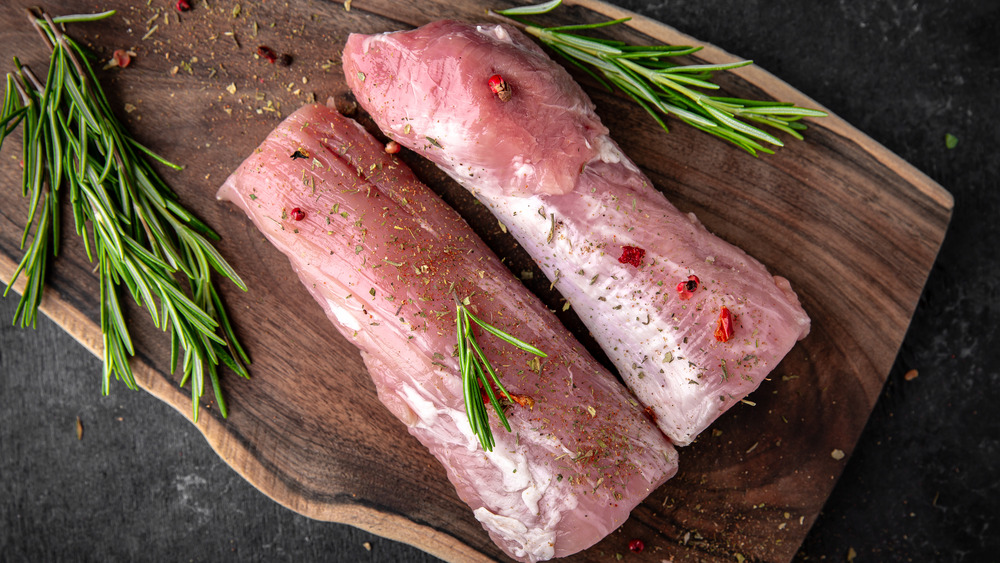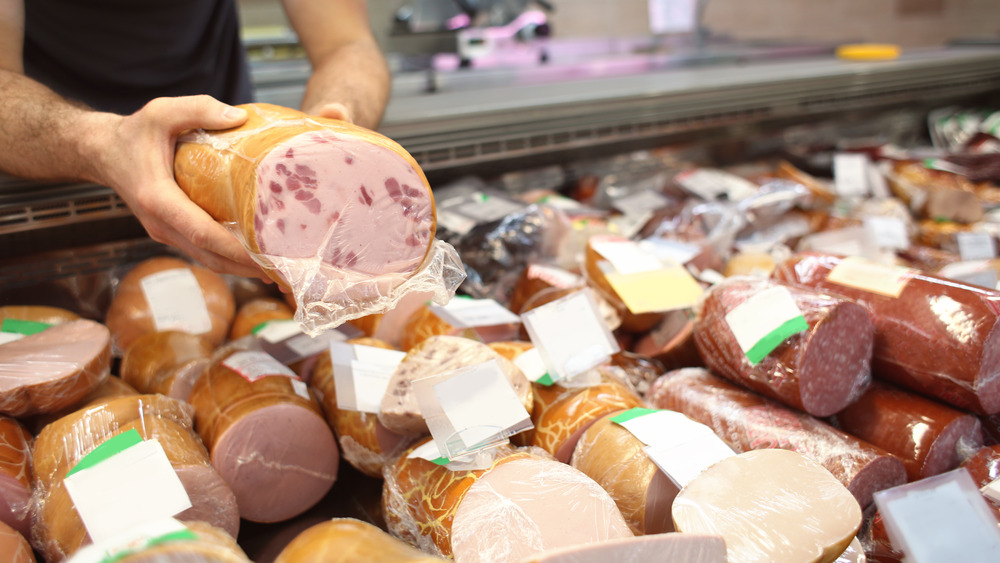The Gross Ingredient That Could Be Hiding In Your Meat
Here's a brainteaser for all you meat-lovers out there: What does pork tenderloin have in common with imitation crab meat (besides the obvious, which is that they are both animal-based sources of protein)? If you guessed "meat glue," then proceed the head of the class! That's right — both of these foods may contain an added enzyme called "transglutaminase," sometimes referred to as "meat glue" (via VeryWellFit) because it helps bind the surface of meats together to create a larger serving of meat from smaller cuts, according to the United States Department of Agriculture (USDA). Notwithstanding its icky nickname, transglutaminase is a "natural substance" that is considered "safe" for human consumption according to the USDA Food Safety and Inspection Service (FSIS), and it has been permitted to be used as a food additive in the U.S. since 2001, according to the U.S. Federal Register.
Other foods that may contain this binder include many of the luncheon meats at your local deli counter, chicken nuggets, sausage, hot dogs, and any meat or poultry that is "formed" from smaller cuts, including pork roast, veal roast, turkey legs, and duck breast (via ScienceDirect). Here is what you need to know about this seemingly gross ingredient that could be hiding in your meat.
Is 'meat glue' really as gross an ingredient as it sounds?
Binding smaller pieces of food together to form a cohesive whole is not necessarily gross — unless you think egg salad is gross (which is bound together with mayonaise), or these Aldi crab cakes that everyone's talking about and no one can get enough of (which are bound together with soybean oil, eggs, and xanthan gum, among other ingredients, according to Fooducate). And you certainly could not enjoy a burger or a sausage if you cannot stomach the notion that sometimes meats need to be bound together in order to form a delicious whole.
But it's not unreasonable to regard the notion that there might be "meat glue" hiding in your meat to be, at the very least, a bit unsettling — especially when you find out that transglutaminase is derived from the fermentation of a bacteria called streptoverticillium mobaraense (via FSIS). That being said, there are two serious misconceptions about transglutaminase that are worth debunking.
Debunking the myths about transglutaminase
While it is believed by some that transglutaminase has been banned by the European Union (via Reader's Digest), this claim appears to be based on a misunderstanding. Transglutaminase is perfectly legal in the EU (via Food Navigator). What was banned in the EU was "bovine and porcine thrombin used as an additive to bind separate pieces of meat together into one piece," and although bovine and porcine thrombin have been called "meat glue" by some, the fact is that thrombin is entirely distinct from transglutaminase (via Food Safety News).
For example, in this 2001 research paper published in the journal Arteriosclerosis, Thrombosis, and Vascular Biology, scientists studied the way these two distinct substances interacted with one another in the human body. So, no, transglutaminase is not some gross ingredient that the U.S. allows despite it being banned in Europe.
In addition, some people have expressed concern that transglutaminase contains "gluten." It does not (via VeryWellFit). That being said, foods that contain transglutaminase may also contain wheat and other gluten-containing additives. Therefore, it is always important to read food labels, especially if you are following medically necessary dietary restrictions such as those that go along with Celiac disease.


